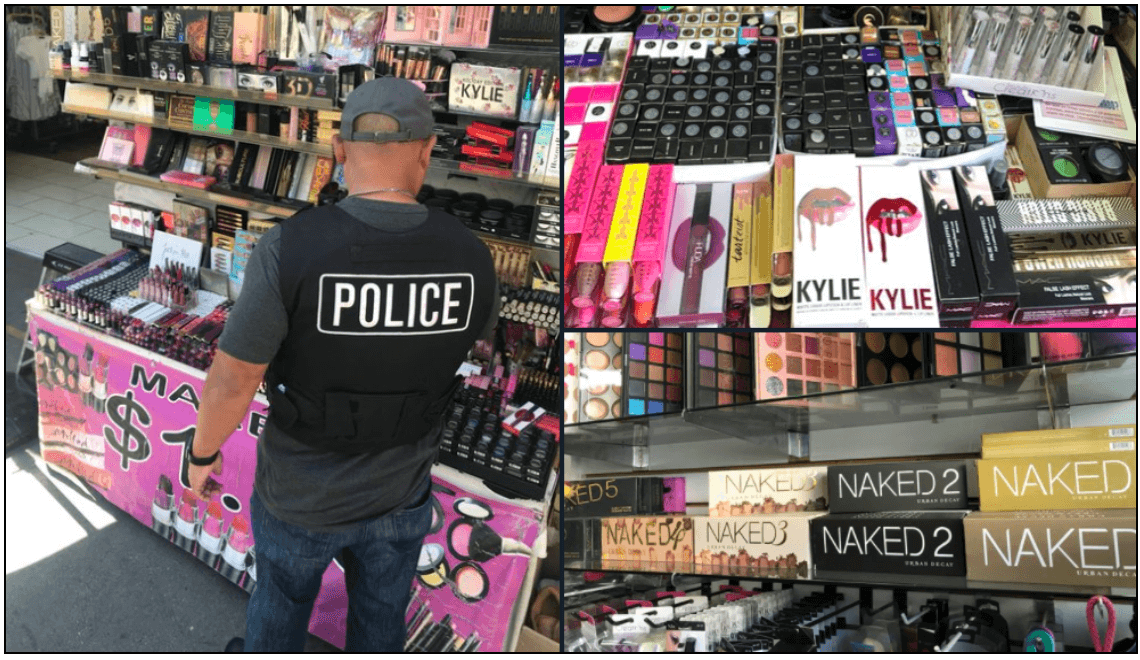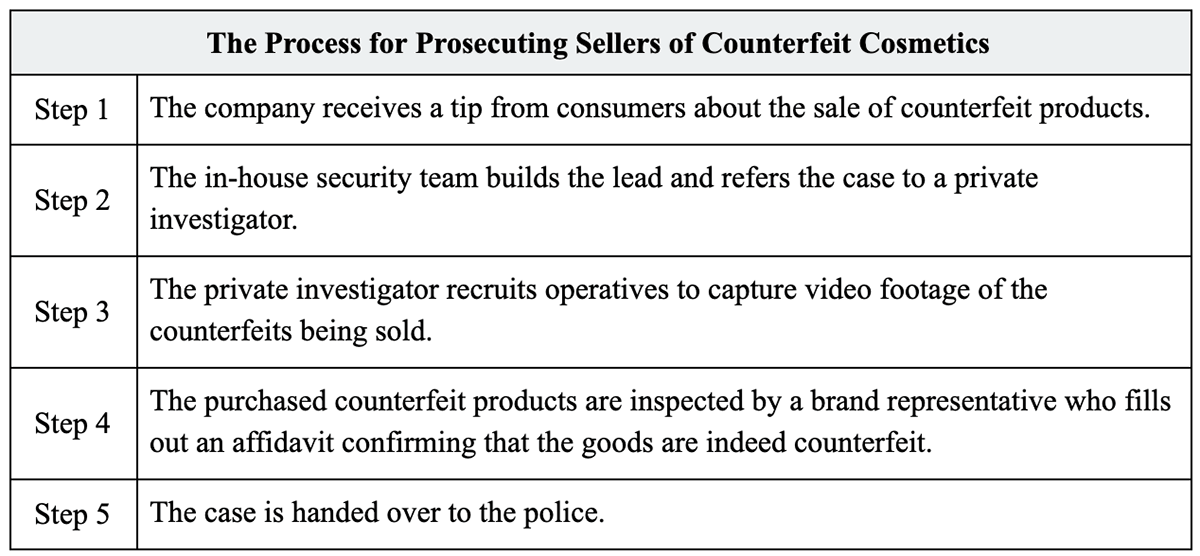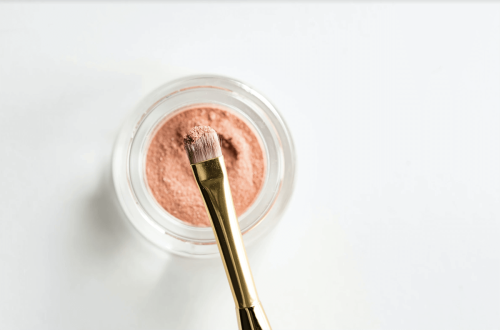The rapid expansion of counterfeit cosmetics internationally and in the U.S. poses a public health risk for consumers and threatens the bottom lines of countless makeup companies.
The global cosmetics industry is valued at approximately $523 billion and is expected to reach $805 billion by 2022. This massive explosion in the makeup industry is due in large part to the rise of e-commerce, which has connected buyers to third party vendors at an unprecedented scale. Accompanying the convenience of online shopping is the surge of counterfeit cosmetic products sold across the world.
Given the significance of the problem, it is important for all relevant parties to be aware of the size of the counterfeit cosmetics industry and develop best practices to identify and eradicate its sale wherever it emerges.
Recent counterfeit makeup seizures
Counterfeit makeup seizures in the U.S. and abroad are becoming alarmingly common. The Los Angeles Police Department (LAPD) confiscated counterfeit beauty products worth $700,000 in the Santee Alley fashion district in April 2018. And in January 2020, the LAPD seized more than $300,000 in counterfeit makeup products mimicking Kylie Jenner’s company Kylie Cosmetics.

Fig. 1: The LAPD’s seizure of counterfeit cosmetics in 2018 were later found to contain bacteria and human waste. Source: Commander Marc Reina – LAPD (@LAPDMarcReina)
In the eastern city of Taizhou, Chinese police seized a massive load of counterfeit cosmetics from several underground hubs that had a combined street value of $120 million in 2017. Some of the counterfeit brands included Chanel, Christian Dior, L’Oreal SA’s Lancome, and Estée Lauder.
In 2018, the Local Government Association in London uncovered hundreds of thousands of pounds worth of counterfeit beauty products of well-known brands such as MAC, Chanel, and Benefit. The chemicals found in several of the counterfeit goods were said to cause chemical burns and skin rashes; some products also contained mercury, a highly toxic chemical even in small doses.
The counterfeit makeup industry and its effects
Despite the escalation in counterfeit makeup seizures in recent years, the counterfeit cosmetics industry continues to grow. Since 2013, the international counterfeit makeup trade has steadily increased and was estimated to be worth $5.4 billion in 2016, according to the Organization for Economic Cooperation and Development (OECD). The largest recipient of these fake goods is the United States, which accounts for roughly 20 percent of the total value of counterfeit seizures globally.
This growing trend is particularly troublesome, as the counterfeit makeup industry has already had harmful repercussions for consumers, corporations, and governments.
For consumers, the application of counterfeit makeup can be harmful and sometimes even deadly. Government investigations have found fraudulent cosmetics containing known carcinogens such as arsenic, beryllium, and cadmium; others have exhibited high levels of toxic heavy metals like lead and mercury. As a consequence of these dangers, the U.S. Food and Drug Administration received nearly 12,000 instances of consumers reporting adverse effects tied to cosmetics from January 2018 to March 2020.
The counterfeit makeup industry also harms the reputation of consumer brands by supplying the market with inferior quality products under famous brand labels. And it reduces company sales by diverting potential customers from buying health and beauty products directly from name brands and established retailers; the cosmetics and personal care industry is estimated to have lost $5.5 billion in sales from counterfeit products in 2020, according to statistics and survey provider Statista.
For governments, the counterfeit cosmetics industry poses a threat to national security since established counterfeit trade networks could be exploited by transnational criminal organizations engaged in other illicit enterprises.
The provenance of counterfeit cosmetics
The majority of the world’s seized counterfeit items are manufactured in mainland China, according to the OECD; an additional quarter originate from the counterfeit export hub of Hong Kong. The prevalence of counterfeits manufactured in China is also apparent in its domestic cosmetics industry, where roughly 20 percent of the market consists of counterfeit products as of 2015.
Multiple investigations into the clandestine labs where counterfeit makeup is produced in China have revealed unsanitary conditions with little to no quality control. Since counterfeiters can hide behind large brand names to sell their products, they do not have to accomodate the quality of their goods for their customer base. Instead, counterfeiters will often replace expensive ingredients used by cosmetic companies with cheaper substitutes to maximize profits which can result in dangerous products.
The parallel rise of e-commerce and counterfeits
The growth in counterfeit makeup products is further exacerbated by the proliferation of online third-party marketplaces. In June 2000, only 22 percent of Americans reported to have made an online purchase compared to 79 percent in December 2016, according to the Pew Research Center. This transformation is reflected in the sheer size of the retail e-commerce business, which reported $3.5 trillion in worldwide sales in 2019 and is projected to nearly double by 2023.
Along with the rise of the e-commerce industry, is the shift of counterfeit goods being sold on street corners and flea markets to online marketplaces. Amazon, which now accounts for a third of online cosmetics sales in the U.S., spends hundreds of millions of dollars each year to police the counterfeits on its website.
The transition to online shopping has made it more difficult not only for e-commerce companies, but also for consumers to identify the characteristics (appearance, price, and location) that are typically associated with counterfeit goods.
- Appearance: Counterfeiters can post pictures of authentic goods in lieu of the counterfeited product and submit fake reviews to bolster its legitimacy.
- Price: Counterfeiters can more easily identify the retail price of genuine goods and set the price of counterfeits closer to it in order to avoid suspicion and maximize profit.
- Location: Counterfeiters are able to hide themselves under a veil of legitimacy by posting their counterfeit products on reputable online marketplaces alongside real products.
Efforts to address the problem
Given the magnitude of the problem, it is unsurprising that government agencies and corporations are taking ever increasing measures to counter the sale of counterfeit goods.
Major cosmetics companies like Estée Lauder and L’Oréal have anti-counterfeit departments tasked with identifying and reporting counterfeits to law enforcement across the globe. While such efforts are encouraging, charging counterfeiters with a crime in the U.S. can be a laborious and costly operation for companies. (See below)

Indicators of counterfeit makeup
When considering whether to purchase cosmetics, there are several quick indicators to look for that could indicate the product is a counterfeit:
- Packaging: Counterfeit makeup products often show subtle differences with the authentic brands with different lettering or slightly off-color wrapping.
- Fake Sales: Counterfeits frequently advertise their makeup products as part of a fake “limited edition” collection to explain the differences in appearance from genuine manufacturers.
- Price: A major red flag for any counterfeit good is when the price is significantly lower than the retail price of the legitimate product.
- Physical quality: Counterfeit cosmetics often exhibit an inferior consistency or texture than those from authentic brands. The absence of the signature characteristic of a brand is also another indicator of a counterfeit.
- Location: Counterfeit cosmetics are most commonly found in unauthorized retailers, including flea markets, mall kiosks, and online marketplaces.
Even scrupulously adhering to these tips will not ensure that a product is legitimate. The best guarantee of a genuine product for consumers is to buy health and beauty products directly from established brands and authorized retailers.
What can be done?
The issue of counterfeit makeup is pervasive and does not have an easy solution. However, as discussed in a recent Sayari article on counterfeit high-end wine, combating the counterfeit industry requires a risk-based approach from both buyers and sellers. Customers purchasing cosmetics online should be aware of the key indicators for counterfeits and assess the quality of products in person before using them. For cosmetic companies and online marketplaces, verifying suppliers and enforcing intellectual property rights are crucial tools in preventing the sale of counterfeit cosmetics.
Accelerate Your Data Discovery
Ready to learn how Sayari can protect business reputation and product integrity with data-driven risk insights?



